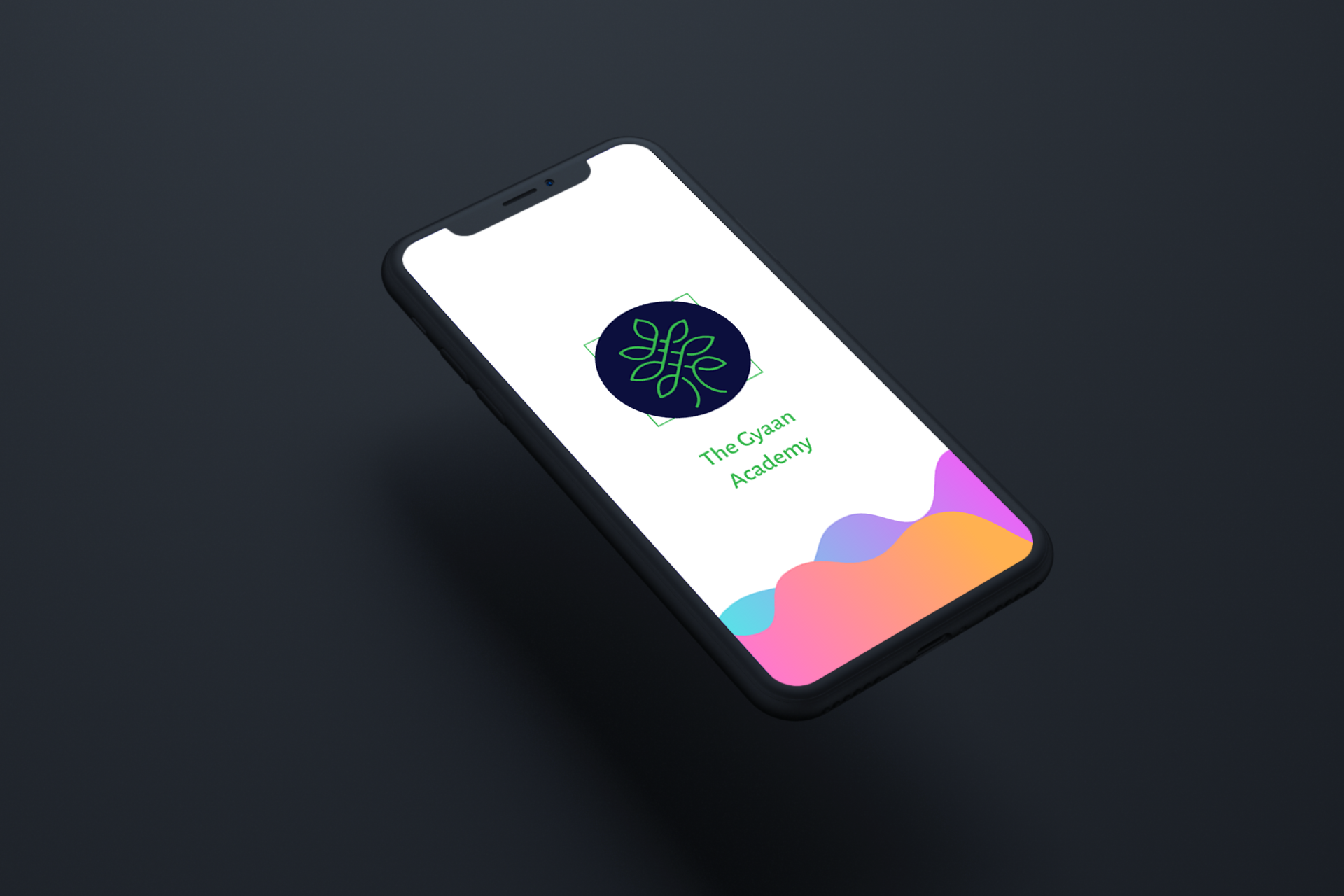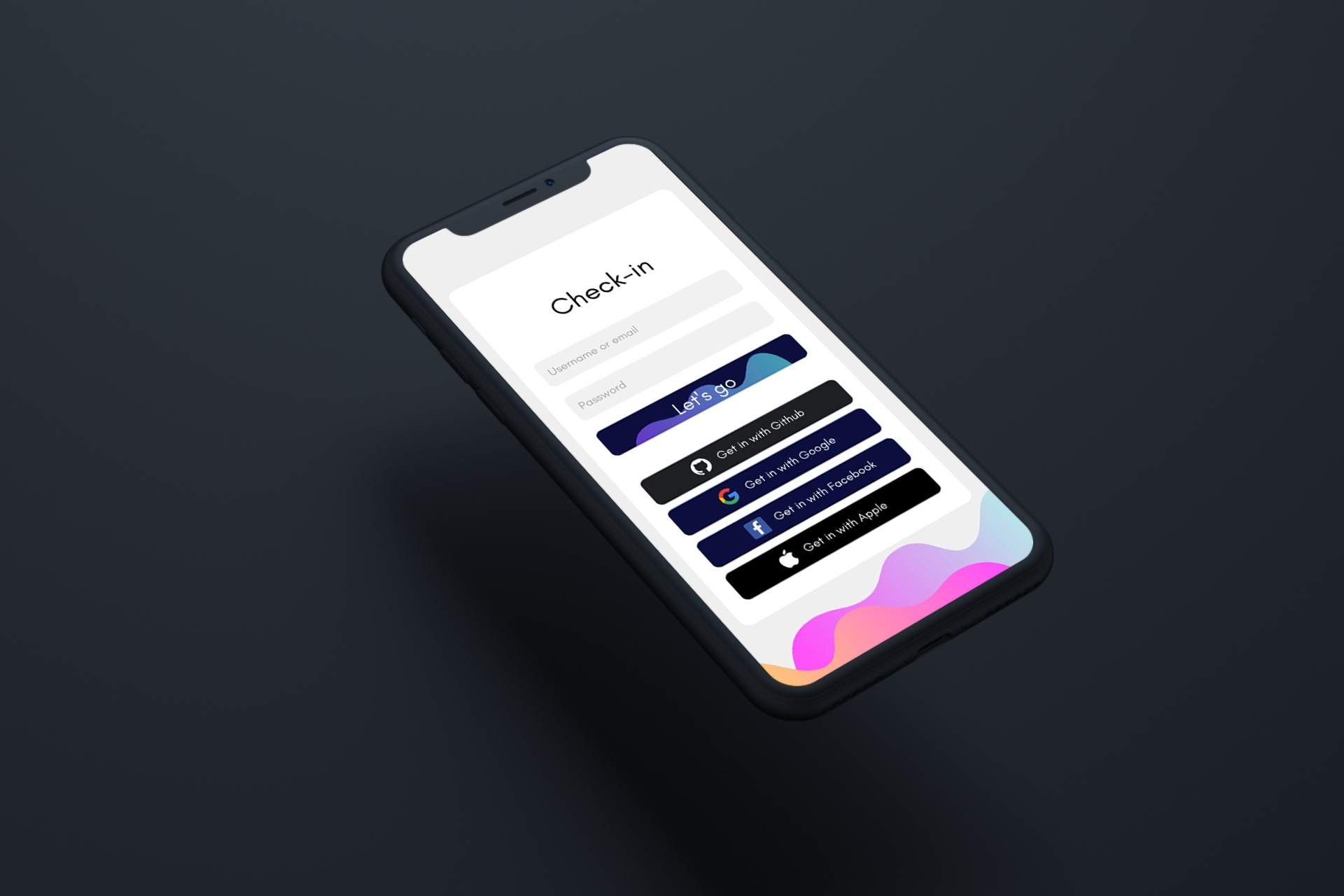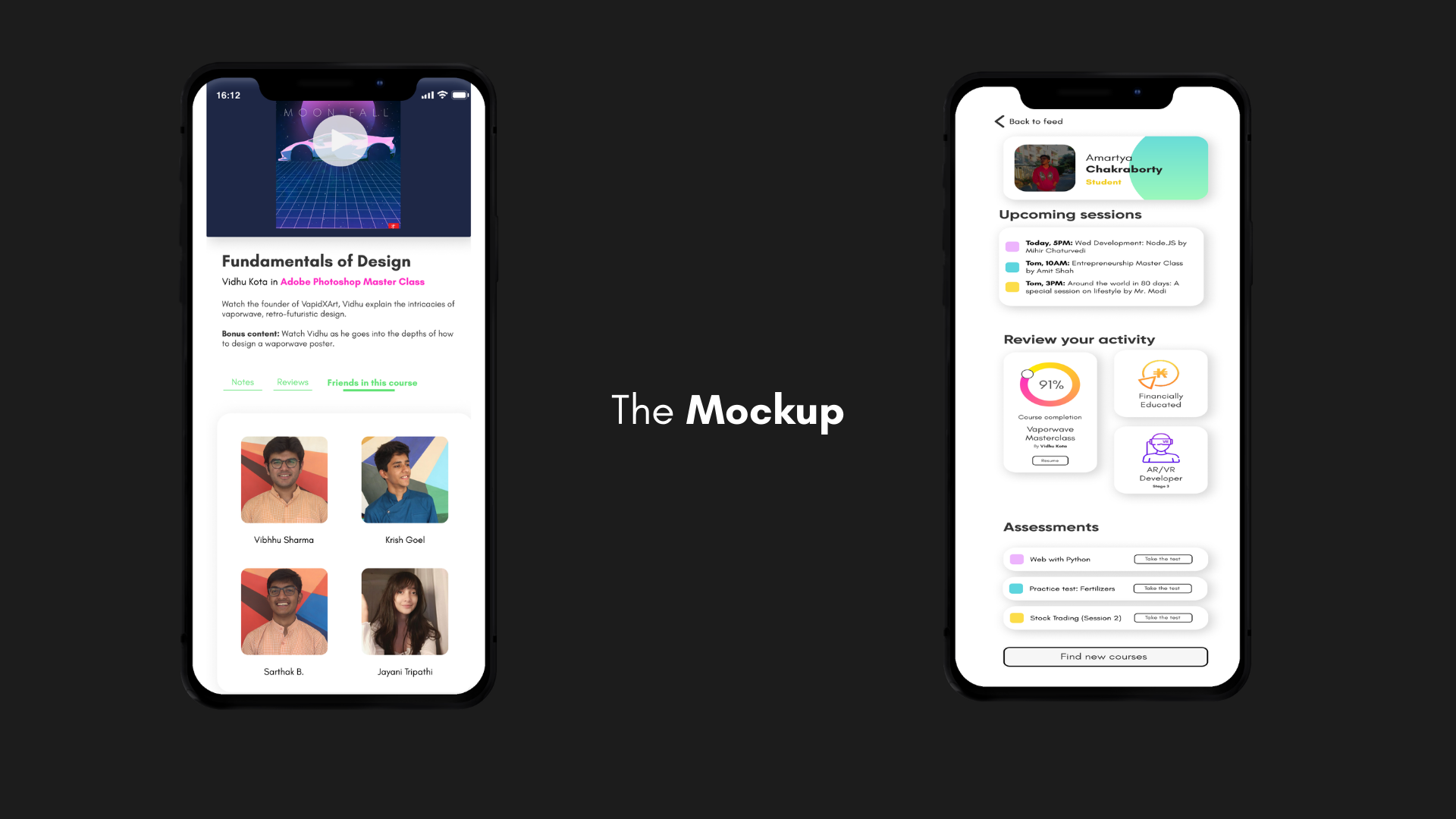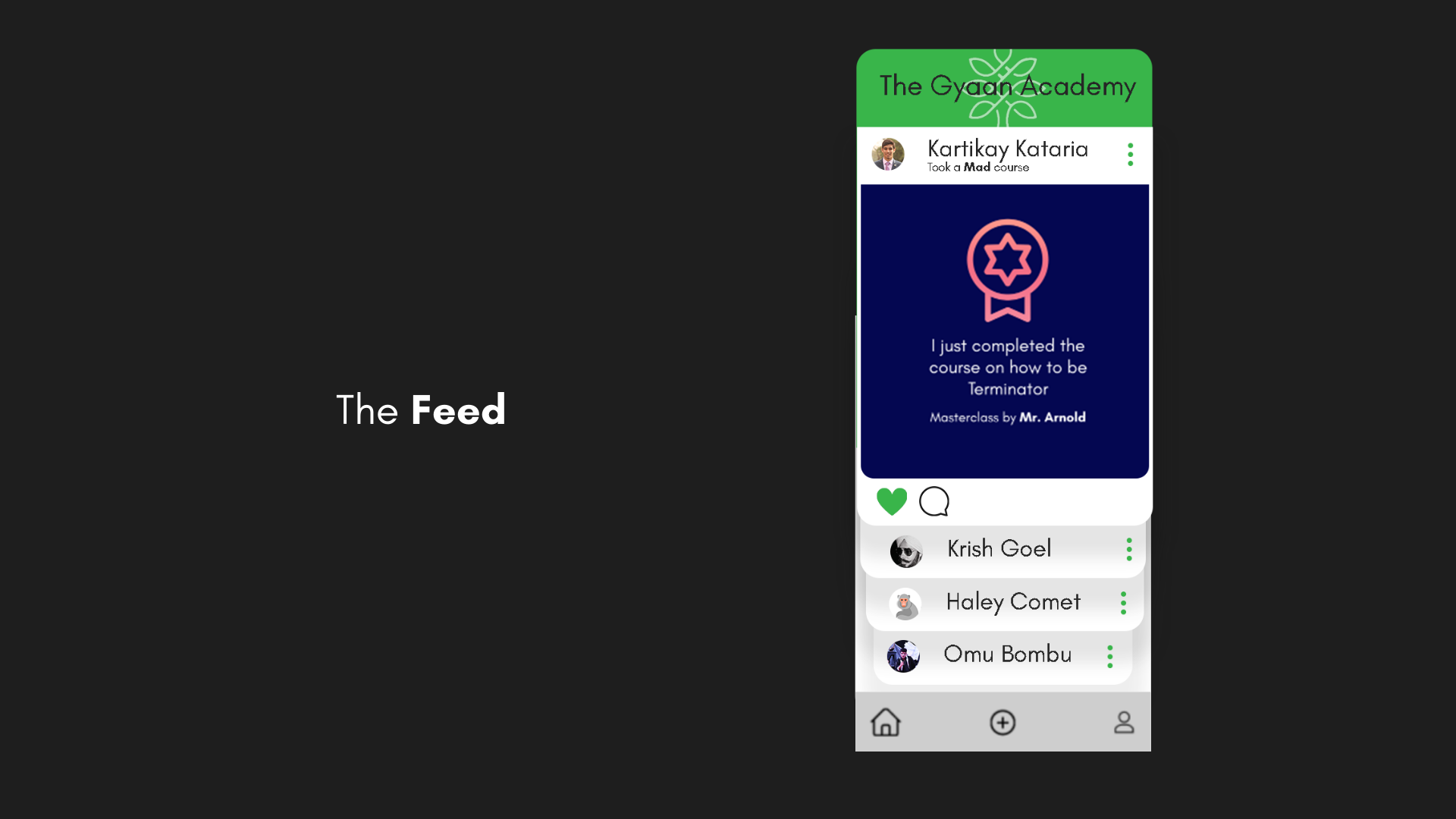Gyaan Academy
These descriptions and images are extracted directly from the speech notes and the deck from the actual pitch, hence the dramatic effects. The compiled pitch deck can be found here
Gyaan Academy was our (Amartya, Kataria, and my) idea submission to the Make Prompt at MINET X 2020 (more details to the competition can be found here) to solve not just 1 but all 17 Sustainable Development Goals for the 5 BRICS Nations. When we set out on our 60-hour journey to build this idea ground-up, our goal wasn't to win but to create, build something novel that could be scaled to not just the 5 BRICS mentioned by the prompt but any region of the world, to make quality education more accessible.
I have always been passionate about changing the education system for good, teaching what's useful, what the student wants to learn and teaching to the point of perfection. While it is one of my life goals to build a school with the best-in-class infrastructure and state-of-the-art curriculum, this competition gave me a chance to rethink all of that. Why do it then, why not now? Why only for the 3,000 kids who'll attend and not the millions who can do it online? Why only for the ones who'll be able to afford it, why not everyone who deserves it? Gyaan Academy answered all of that.
The event was judged by Mr. Anand Chowdhary (Creative technologist, Forbes 30 under 30).
What is Gyaan Academy?
Gyaan Academy isn't just another Udemy, it’s the new social network. While searching for solutions, we realized that every sustainable dev goal is a subset of the bigger problem - than lack of an educated population so, targeting this root cause would essentially mean eventually minimizing the others. Mahatama Gandhi described education as the mightiest means to shake the world, gently and that's where our thoughts coincided.



Learning what matters more
The things we wanted to learn were never a part of the school syllabus or the content was inadequate, things like entrepreneurship, programming, culinary arts, financial education, even growing plants and hydroponics weren’t there and we believe they would have been much more helpful to us than the history lessons. Well, we don’t do that here, you’re taught only what you want to learn and to the point of perfection.
Being strong believers of Ikigai, we wanted our course selection algos and support to help you find yours.
Learning from the best, the masters of the trade
You choose your gurus and learn from the industry experts, you learn concepts that you can apply in the real world, relevant concepts, you design your future and you learn from the master because obviously, learning from the masters comes with it added extra benefits.
Building the connections you would build in a school
We understand the importance of having real people in your life and the fact that everyone loves a little high school drama and would not want you to be deprived of that, so unlike other learning platforms where you just pursue courses, with Gyaan, you do the same but with friends. The platform has groups, mostly categorized based on your age, and organizes regular meetups and other bonding activities.
Here's how we make it happen
Moving on from what we aim at doing to how we accomplish it


Life Skills Development
First up, we have SUPW Education or Vocational Education and we don’t just restrict ourselves to SUPW, we call it life skills development. Someone said, an ounce of theory is worth a ton of action and we couldn't agree more. When the human brain learns by doing, it learns outside the “ideal-scenario” bubble, it learns where things go wrong and learn the importance of failure for Yoda said, “The greatest teacher failure is”

Master Classes
While we don’t have much to explain here, learning from the master of your trade comes with its own set of benefits, think about it this way, would you wanna be mentored by someone who’s only well-versed with theory or someone like Stephen Hawking.

Curriculum designed with child psychologists and experts
We work with professionals and child psychologists to make sure you learn what is needed without stressing your brains out, to make learning fun while ensuring no one gets bored. This curriculum is periodically updated to prevent any redundancy in terms of content and goes without saying, we add new careers and professions continuously.

Creating social connections
I am sure all of us would agree, school isn’t defined by the 5 subjects taught, it’s about the people, about the friends and about the fun times and nothing could make us deprive you of it so we make sure you develop the same social connections as you would in a physical school. With intra and inter-school events, meetups, bonding activities, etc.
Making it more accessible: The Seekho-Sikhao Programme

Coming to, what about the rural, remote areas and the economically backward sections of the society? Bill Gates said that it isn’t your fault if you’re born poor, it is if you die poor, with our Seekho-Sikhao Programme, we’ll be ensuring our level best that we don’t let the poor die poor.
The idea of this community outreach program is to educate the people in the remote areas and we’re not talking about programming but about skills that’ll be particularly helpful to them, like operating a computer, technologies to advance their current livelihood, hydroponics, and other activities for farmers, basic math, English and science education for the school kids by partnering up with the local schools, etc.
And all of this is done by volunteers from our userbase under the guidance of our mentors and masters, at the end of each of these workshops, you receive a certificate of achievement and the pride of giving back to the community you take so much from.
The Plan of Expansion: Plan 2.0


AR/VR Integration
Imagine being able to get a tour of your dream IT company, your favorite automobile brand’s factory, a modern-day hydroponics farm, or Gordon Ramsey’s kitchen all with your friends from the comfort of your homes. That’s all a part of our AR/VR implementation plan.
The world is headed towards social commerce and so are we
Gyaan Academy isn’t just a school, it’s the new learning social media platform. To explain this aspect in a little more detail, let’s imagine a scenario where you open Instagram and scroll through your feed to see your friends showcasing their achievements, taking courses, master classes going on, even you teaching i.e. any user passing certain requirements to start a course and teach a skill to everyone else around, that’s what our vision coincides with.
Real-life school collaborations
And after a certain period and gaining credibility, we also plan on having Gyaan Academy divisions in school and other educational institutes, all integrated with our APIs because our vision isn't to put the current learning systems out of business but to enhance them.
The econ and the business model



Now comes the part about economics and the funds' usage. Our goal isn’t just to make a strong economy, it’s to make a beautiful, a sundar one. While the majority of the funds would go into making the content and development of the tech stack, we’d also need funds for advertisements and promotions. Which I'll be talking about in the coming sections.
Another strat that can be implemented is paying the master educators for the core initial courses in course royalty fees which may or may not be capped.
Our money-model approach is extremely simple, take the money from the user and pay our bills just as any other business. The interesting part comes in when we talk about the funds' usage and the membership plans.
We plan on offering 2 options for the end consumer - buying a course or buying a subscription. While buying a course is similar to our pseudo-competitors like Coursera and Udemy, the latter i.e. our subscription model is what sets up apart. The subscription allows you access to all of our ‘smarter’ features which includes all of the schooling experience for a limited time much as you’d expect in a school.
To put it into perspective, it’s much like the Kindle books model, you can either buy a book for a price or you can get the KindleUnlimited subscription where you get access to a large library for a limited time.
Now, being an avid reader, The $100 Startup by Chris Guillebeau taught me that any business runs on how it adds value to itself and the user, while the users learn and become a better version of themselves, we add value to ourselves, not just through the monetary transactions of $15-$20 a month, we do it because we create a network, a network of people willing to learn, the next generation which will be the next set of change-makers, once we tap that network, the wealth will have no upper cap. Because the only basic fundamental law to run a business is minimal expenditure and maximum influx of the green, when we have the access to such a network, the marketing costs (also the main expense) drops to absolute minimal 'cause the network does the promotion for us and that's just one way to look at it.
Milan Kundera said, "A business has only 2 aspects, innovation, and marketing. So while we have the innovation part nailed down, let's talk about marketing, about getting the word out there, and about changing the education system around the world for good.
It’s the 21st century and we can’t possibly rely on billboards so we’ll be implementing smart promotion strategies like competitive leaderboards, targeted social media ads with smart analytics, rewards for posting and sharing the platform and achievements.
As suggested by Mr. Aryaman, our mentor for The Gyan Acad, we could implement acquisition marketing i.e. using smart methods to acquire targeted customers who are already slightly inclined into buying your services instead of trying to approach the open world and trying to get everyone, even the people who wouldn't be even remotely interested.
Our strategies for customer acquisition would mainly revolve around social media resharing, why do we buy sneakers? They look good yes but a lot of it comes from the fact that your friends have it too, it makes you feel like a part of a group, we aim at creating a similar feeling of belongingness with our social media campaign, much like people use Instagram because their friends are there, we want people to use TGA because their friends are learning with us. Bonus social media content would include special filters, badges that people can share on their profiles, even if they aren't a customer, we want to create an experience that they can cherish even without paying us and here's how it benefits us when they use our filters, they essentially promote us and that gentlemen, is social media commerce for you. That's what we plan to do.
Ensuring user engagement
Because kids have the attention span of a 2-year-old

Another point raised was, how do we keep the user involved, especially kids who lack the concentration required?
While our core strategy would to be have engaging teaching techniques but that isn't enough so we'll be gratifying the whole process. The user will get points for achievements, completing courses, learning, engaging with other users, referring other users, etc. This is bound to create the feeling of healthy competition, the leaderboard will be available at various divisions starting from 'Your Friends' to 'Global'. Other techniques include social media platform integrations with Instagram and Snapchat because this is Gen-Z.
The Tech Stack
Because at the end of it, it's a tech startup.

While there isn't much to talk about the tech stack here since this is an ideal pitch but no harm in a briefing, so for minimal expenditure, we'll be going for a PWA initially built on Vue.JS with MongoDB and host it on Heroku for functional and smooth cross-platform support. But since nothing beats an old-fashioned mobile application so later on we'll be working on developing those.
The Design Squad
The event had special emphasis on design alongside the idea, here's how the Design Squad nailed that down
Major shoutout to Omu for minting icons at the speed of light and Kataria for joining us on the second night and revamping the entire design model.
While creating the user flows and UX for Gyaan Academy, we wanted to create something intuitive, something that flows naturally through the neurons. While there's the scope of development there, here's a quick guide into how we put everything together.
The Palettes
We went for a very simplistic look with pastel green and muted tones of blue, white, and black to exhibit the connection of learning with nature. However, we did play with some gradients to keep the design being dull, to make it more engaging.
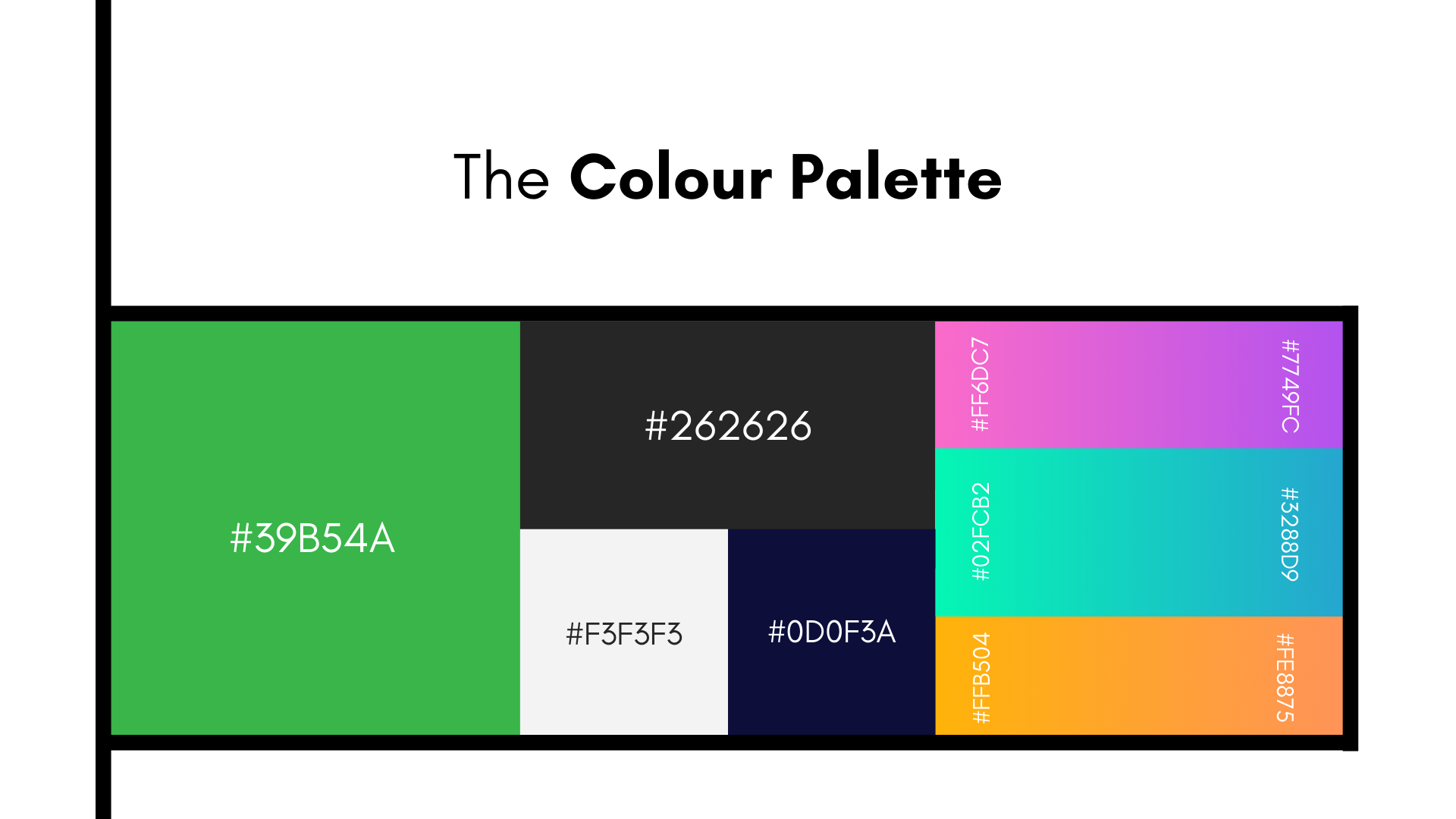
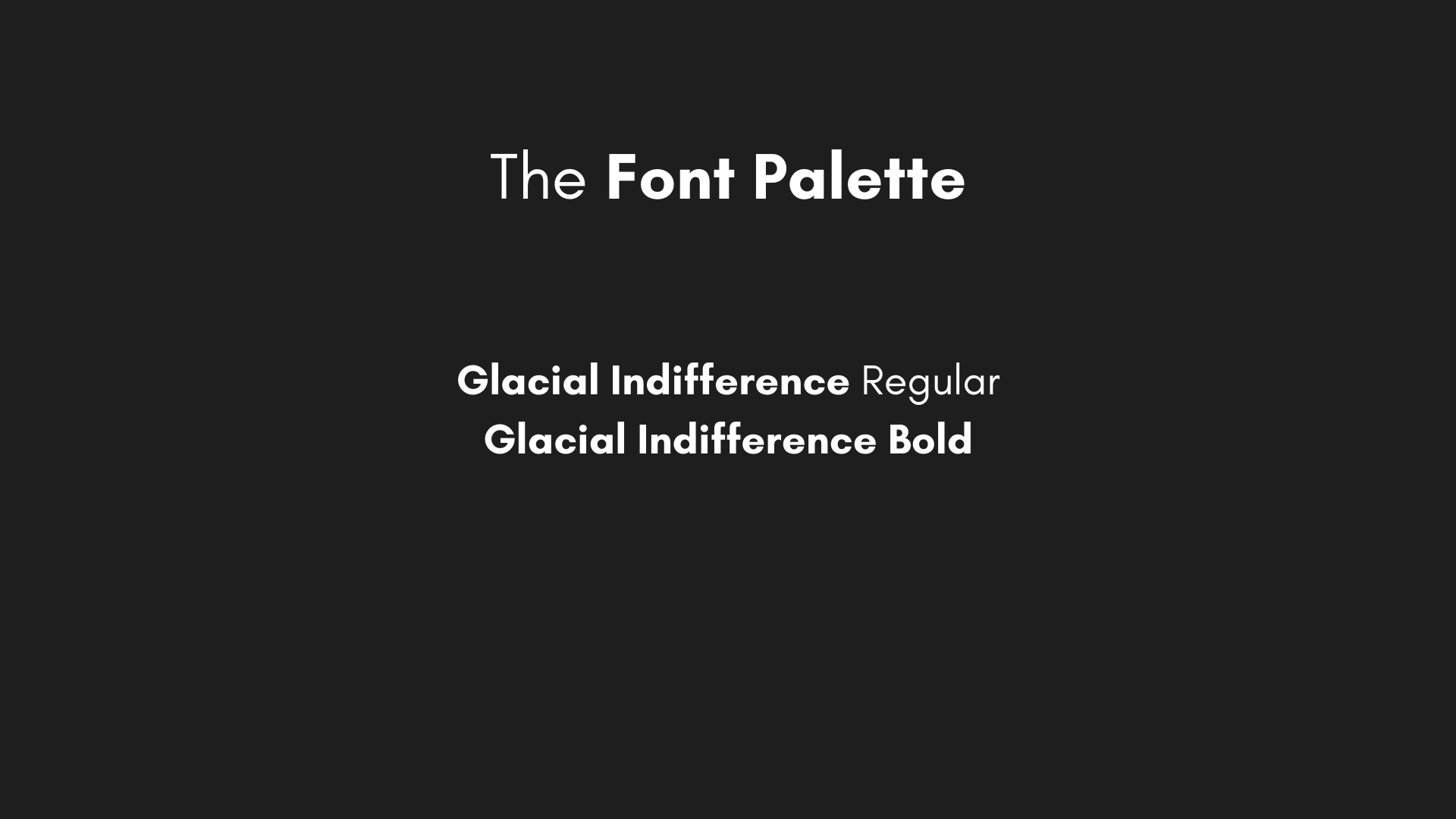
The Logo
Kartikay revamped our logo design from being a Banyan Tree flat icon to a geometric Banyan Tree, the tree of wisdom and learning according to many ancient Indian tales.
The green represents serenity, the container deep blue represents the unknowns of the universe and the green square gives it an illusionistic feel to convey the element of surprises. This was the result and we couldn't be more satisfied with it.
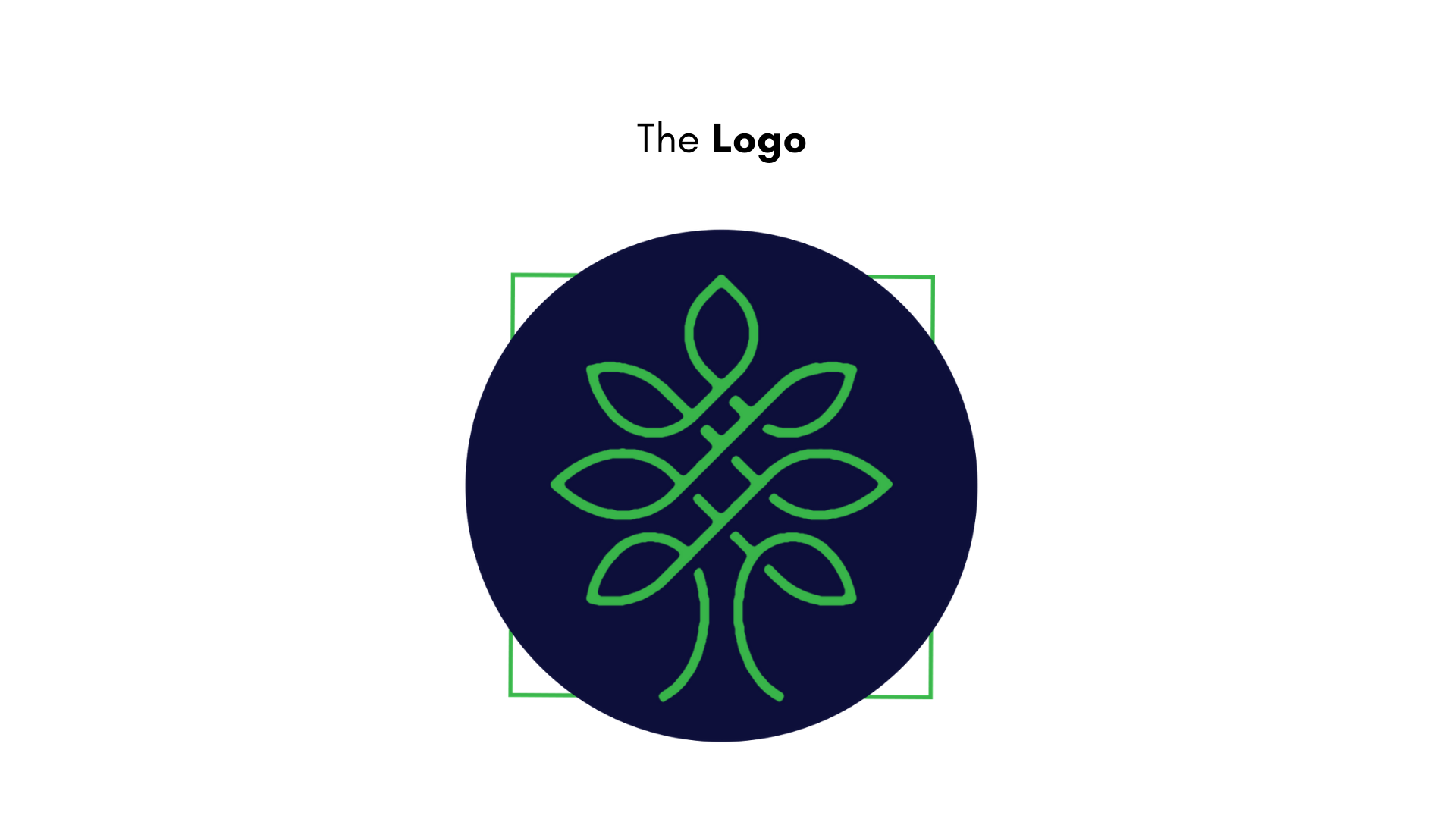
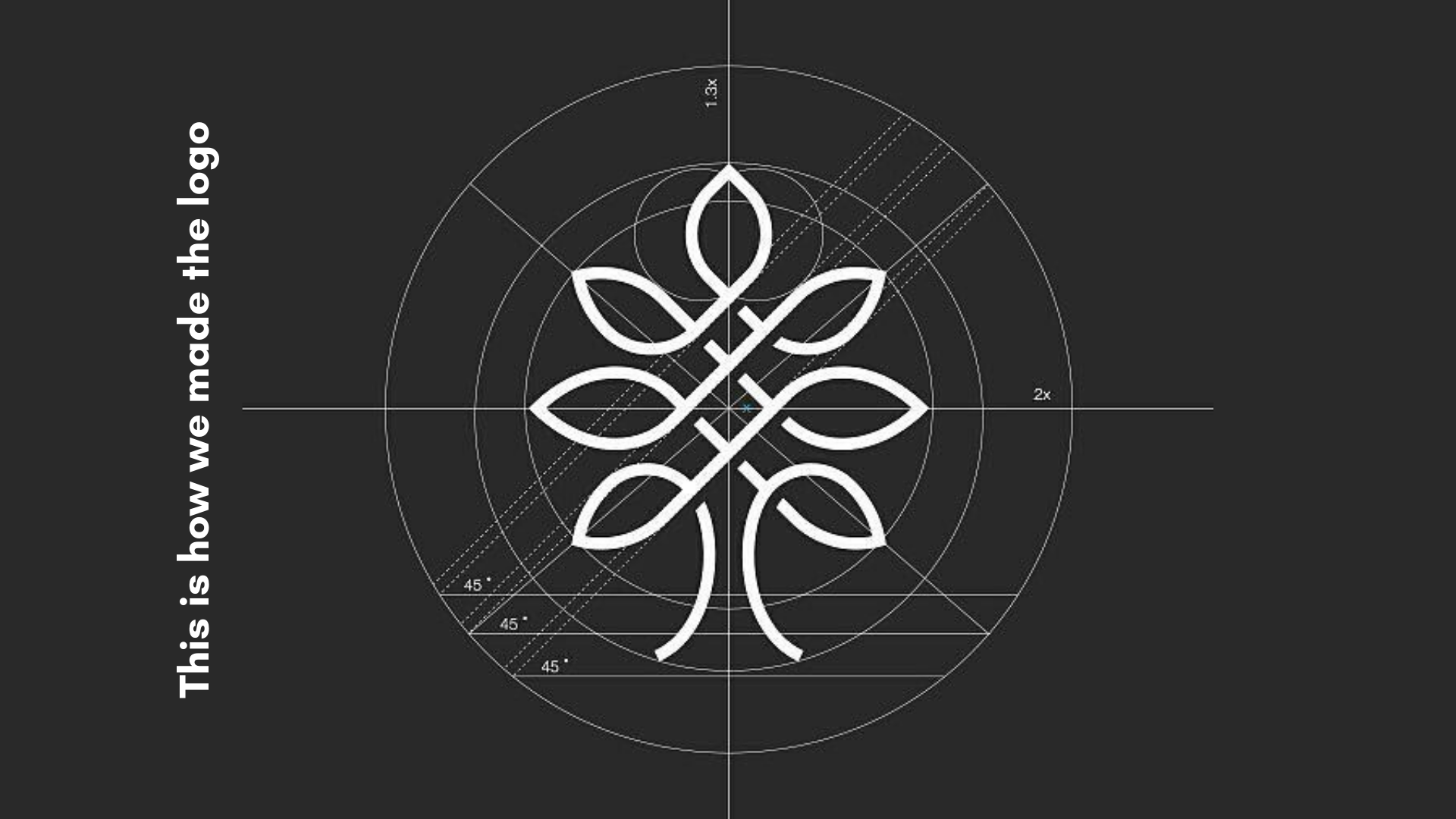
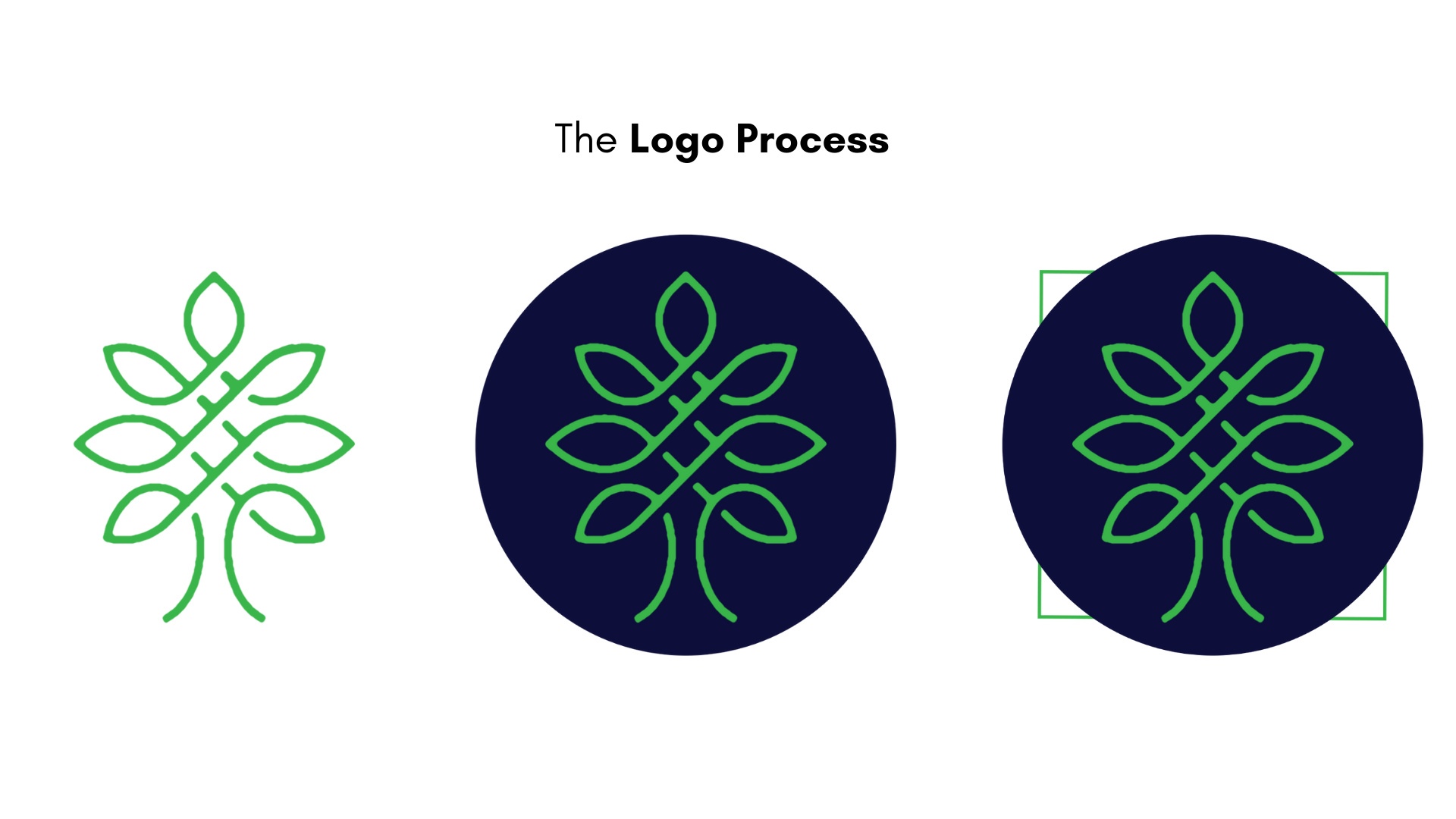
Gradient Icons
Amartya brilliantly made over 30 icons to make the deck and pitch more appealing, these are only some of his clean and precise flat icons with make-clipped gradients that bring them to life.
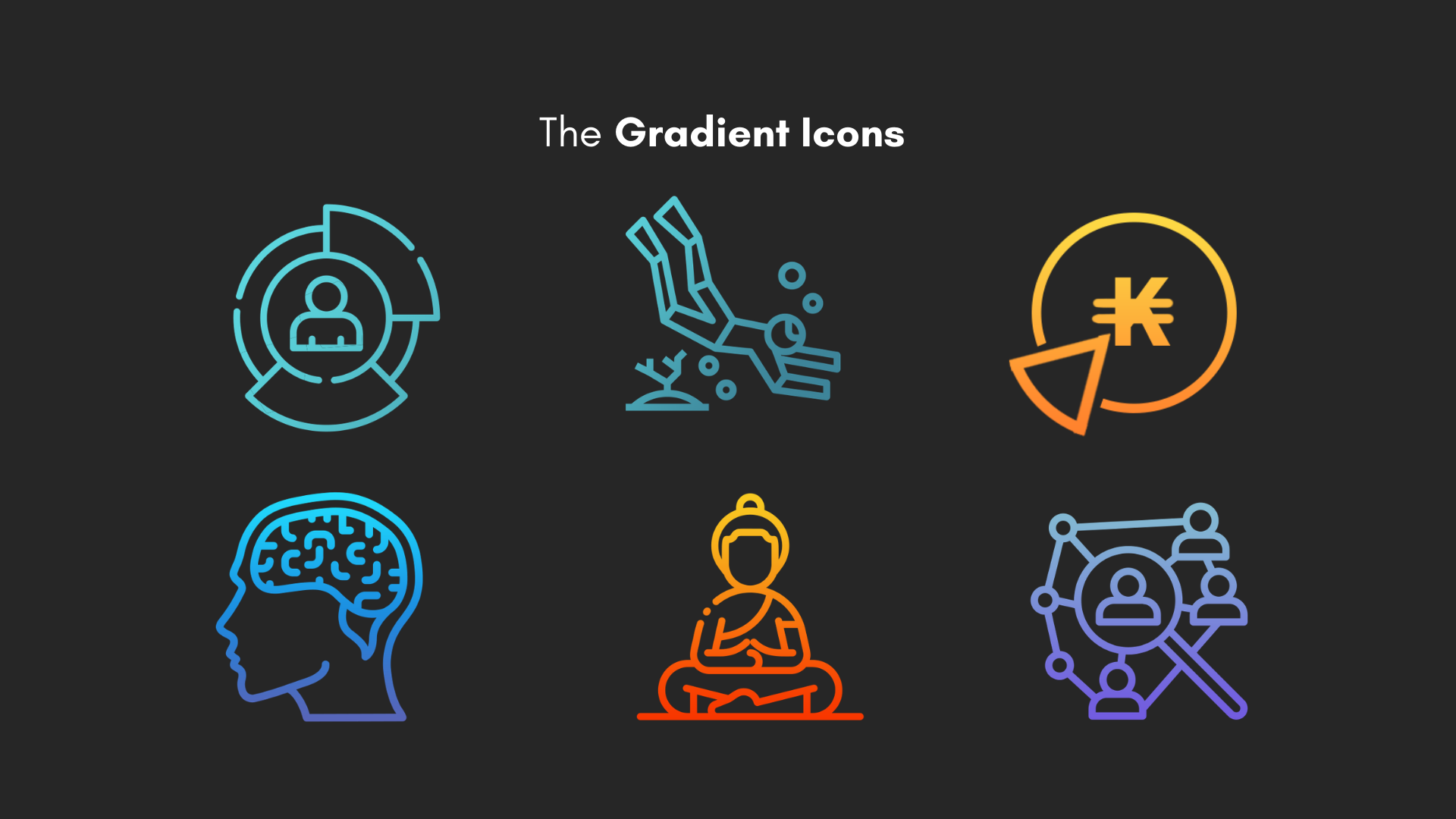
The Mockups
Made on Figma and Photoshop. We had to shrink to the size of the mockup screen because of some guidelines, properly rendered mockups coming soon (hopefully).
